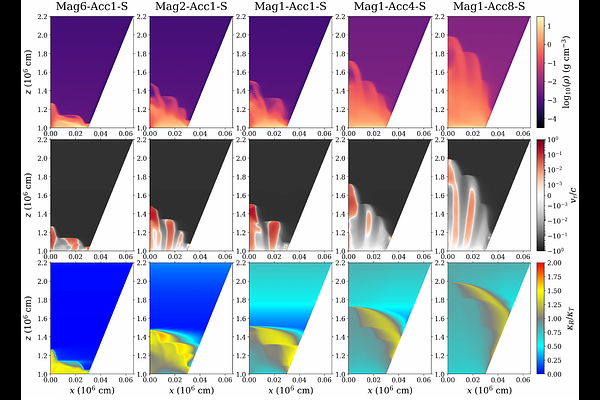A Parameter Survey of Neutron Star Accretion Column Simulations

A Parameter Survey of Neutron Star Accretion Column Simulations
Lizhong Zhang, Omer Blaes, Yan-Fei Jiang
AbstractWe conduct a parameter survey of neutron star accretion column simulations by solving the relativistic radiation MHD equations with opacities that account for strong magnetic fields and pair production. We study how column properties depend on accretion rate, magnetic field strength, and accretion flow geometry. All the simulated accretion columns exhibit kHz oscillatory behavior, consistent with our previous findings. We show how the predicted oscillation properties depend on the column parameters. At higher accretion rates for fixed magnetic field, the column height increases, reducing the local field strength and leading to an anti-correlation between the observed cyclotron line energy and luminosity. We estimate the line energy from the simulations and find agreement with the observed trend. Downward scattering in the free-fall zone plays a key role in shaping sideways emission properties and column height. Strong downward scattering not only re-injects heat back into the column, increasing its height, but also compresses sideways emission, potentially smearing out shock oscillation signals. When the pair-production regime is reached at the base of the column, the system quickly readjusts to a force balance between gravity and radiative support. The high opacity in the pair-production region raises the radiation energy density, enhancing sideways emission through a large horizontal gradient. This shifts the sideways fan-beam radiation toward lower altitudes. In a hollow column geometry, both pencil- and fan-beam radiation emission occurs. Self-illumination across the hollow region increases the height and stabilizes the inner wall of the column, while shock oscillations persist in the outer regions.